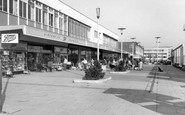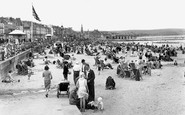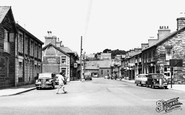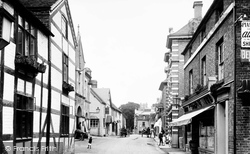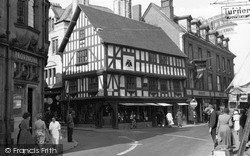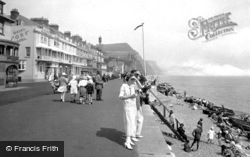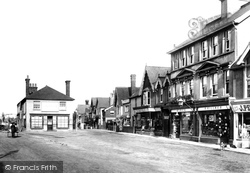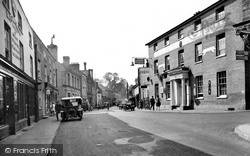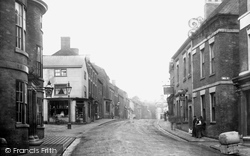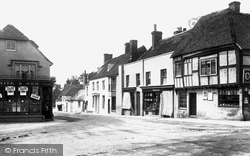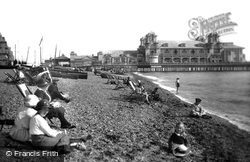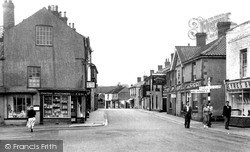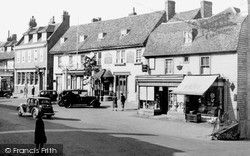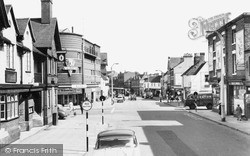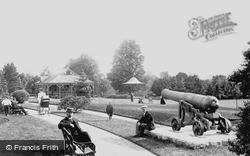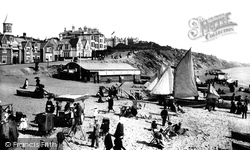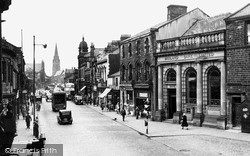Places
26 places found.
Those places high-lighted have photos. All locations may have maps, books and memories.
- Town End, Derbyshire
- Town End, Buckinghamshire
- Town's End, Somerset
- Towns End, Dorset
- Town End, Merseyside
- Town End, Cambridgeshire
- Town's End, Buckinghamshire
- West End Town, Northumberland
- Bolton Town End, Lancashire
- Kearby Town End, Yorkshire
- Town End, Cumbria (near Grange-Over-Sands)
- Town End, Cumbria (near Bowness-On-Windermere)
- Town End, Yorkshire (near Huddersfield)
- Town End, Yorkshire (near Wilberfoss)
- Town End, Cumbria (near Appleby-in-Westmorland)
- Town's End, Dorset (near Melbury Osmond)
- Town's End, Dorset (near Swanage)
- Town End, Cumbria (near Ambleside)
- Town End, Cumbria (near Lakeside)
- Town End, Cumbria (near Kirkby Lonsdale)
- Town End, Cumbria (near Ambleside)
- Town's End, Dorset (near Bere Regis)
- West-end Town, South Glamorgan
- Townend, Derbyshire
- Townend, Strathclyde (near Dumbarton)
- Townend, Staffordshire (near Stone)
Photos
26 photos found. Showing results 1,541 to 26.
Maps
195 maps found.
Books
160 books found. Showing results 1,849 to 1,872.
Memories
3,719 memories found. Showing results 771 to 780.
Ryde
I was born in Longmead Road, Ryde, and remember frequenting the local band's venues, The 69 club at the Ryde Castle and the Royal York Hotel, also The Seagull at the end of Ryde Pier and the Babaloue? at Ryde airport. Ryde had many famous bands ...Read more
A memory of Ryde in 1961 by
Pilgrims Hatch/Childhood.
I was born in London in 1937 and moved to Days Lane, Pilgrims Hatch in that year,so all my childhood years were spent around the Pilgrims Hatch area. Dad was always sharp of the mark and a couple of steps ahead so foresaw ...Read more
A memory of Brentwood in 1940 by
Harlow Town Centre
I moved to Harlow in the mid 50's from London as a 5 year old child with my mother and father, where I lived on Pittmans field. I went to school at Broadfields Juniors and then moved on to Netteswell. My first job was in the ...Read more
A memory of Harlow in 1957 by
Greenford Sixties And Seventies
I was born in 1958 in the Perivale Maternity hospital off the Western Avenue. I lived for my first few years in Goring Way and then Queens Avenue until leaving the area in 1973. Memories etched on my mind: ...Read more
A memory of Greenford by
The War Years
I was born in Hawthorn Street, Millfield in 1930. Went to Diamond Hall School. I remember the day war was declared, my mother said the Germans would bomb us because of all the industry around us. My father was in the Territorial Army ...Read more
A memory of Sunderland in 1943 by
Mitchell Street
I was born in Mitchell Street in 1952 we were a big family; 7 brothers and 2 sisters and things were very hard but everyone got along well with each other. I remember visiting my auntie Nan in the slap up top floor Henderson St ...Read more
A memory of Coatbridge in 1952 by
My Granddad, Police Constable Jack Eames
Well, the story goes that there was a robbery from a jewellery shop in the town during the day, and in those days there were no mobile phones or walky talkies, only landline phones. My granddad ...Read more
A memory of Newport by
Hounslow In The 1950's And 1960's
I am Rosemary Harris (now Davies) and I was born in Livingstone Road in 1943 and was christened at St Stephen’s Church. I attended Hounslow Town Infants and Juniors and then Bulstrode Girls School from 1955-1960, ...Read more
A memory of Hounslow by
Another Memory Of Weymouth
In the 50's Bertram Mills Circus used to come to town and I remember there was a great procession through the streets near the harbour, this included the elephants and the prancing horses! On Saturday mornings there were ...Read more
A memory of Weymouth
Summer Holidays
1960 - I was only seven then, but I spent every summer until I was eighteen at my grandmother's house in School Street - 'number nine' - strange name for a house but that's what everyone called it. Every Wednesday (or was ...Read more
A memory of Penrhyndeudraeth in 1960 by
Captions
5,111 captions found. Showing results 1,849 to 1,872.
A delightful gravestone survives in the town's churchyard commemorating Ann Cook who died in 1814: 'On a Thursday she was born, On a Thursday made a bride, On a Thursday broke her leg, And on a Thursday
The town has suffered a great deal over the centuries: it was regularly ransacked and burnt - sometimes by the Welsh, sometimes by the English. There are therefore only a few really old buildings.
In the 1920s, Sidmouth had a reputation as an up-market resort, as renowned for its climate and setting as for its sea bathing.
The clock tower dominates the main street of the West Cumberland town.
Here, the New Town swept them away, but they survive in Arundel and East Grinstead.
The town experienced rapid change and development after the railway arrived in the 19th century. The Bell Hotel was built in 1842. On the left, a chauffeur waits patiently.
Here we see the town's monument to the memory of those from Eccles who gave their lives during two world wars.
The clock tower dominates the main street of the West Cumberland town.
At the beginning of the 19th century Brading's curate was Legh Richmond, whose moral tale 'The Annals of the Poor' and other rural stories enjoyed a large readership.
At the beginning of the 19th century Brading's curate was Legh Richmond, whose moral tale 'The Annals of the Poor' and other rural stories enjoyed a large readership.
The town grew up astride what was the most important road in medieval England, that between London and Chester, at that time the principal port for Ireland.
Looking along George Street from Market Square, the timber-framed building and Ellis's were replaced in 1910 in Jacobean style by Market Chambers and a bank.
H.G.Wells and Rudyard Kipling spent their formative years locally, and Arthur Conan Doyle established a medical practice in the town in 1882.
Back in the Market Place, the photographer looks south down the High Street. Cook's on the corner is still a newsagent and stationer, Goodnews.
In the centre of the picture, the George and Dragon, with its quaint porch and balcony supported on brackets, was originally an old posting inn.
Michael Palladino used to go round the town with his ice-cream barrow and charged a penny for a wafer and just a halfpenny for a cup.
Christchurch stands on two rivers, the Stour and the Avon, and gets its old name of Twyneham from the Anglo Saxon, meaning 'the town between the rivers'.
With an old castle, and the River Exe running through the town, it presents plenty of opportunities for recreation.
This fine estate is about one and a half miles south of the town, on the minor road to Newbliss and Cavan. Little now remains, but the park is very popular.
Back in the Market Place, the photographer looks south down the High Street. Cook's on the corner is still a newsagent and stationer, Goodnews.
Every south coast town had to have its 'Steyne', copying the name from Brighton.
The hilltop town of Shaftesbury became important when King Alfred founded an abbey here, and installed his daughter as abbess.
The story of how the town got its name is an unusual one. When the railway arrived, a station was built here at Marsden.
This view was taken from almost the identical position to the 1897 photograph, and it is surprising to see how many of the previous century's buildings continued to exist with the addition of modern façades
Places (26)
Photos (26)
Memories (3719)
Books (160)
Maps (195)



